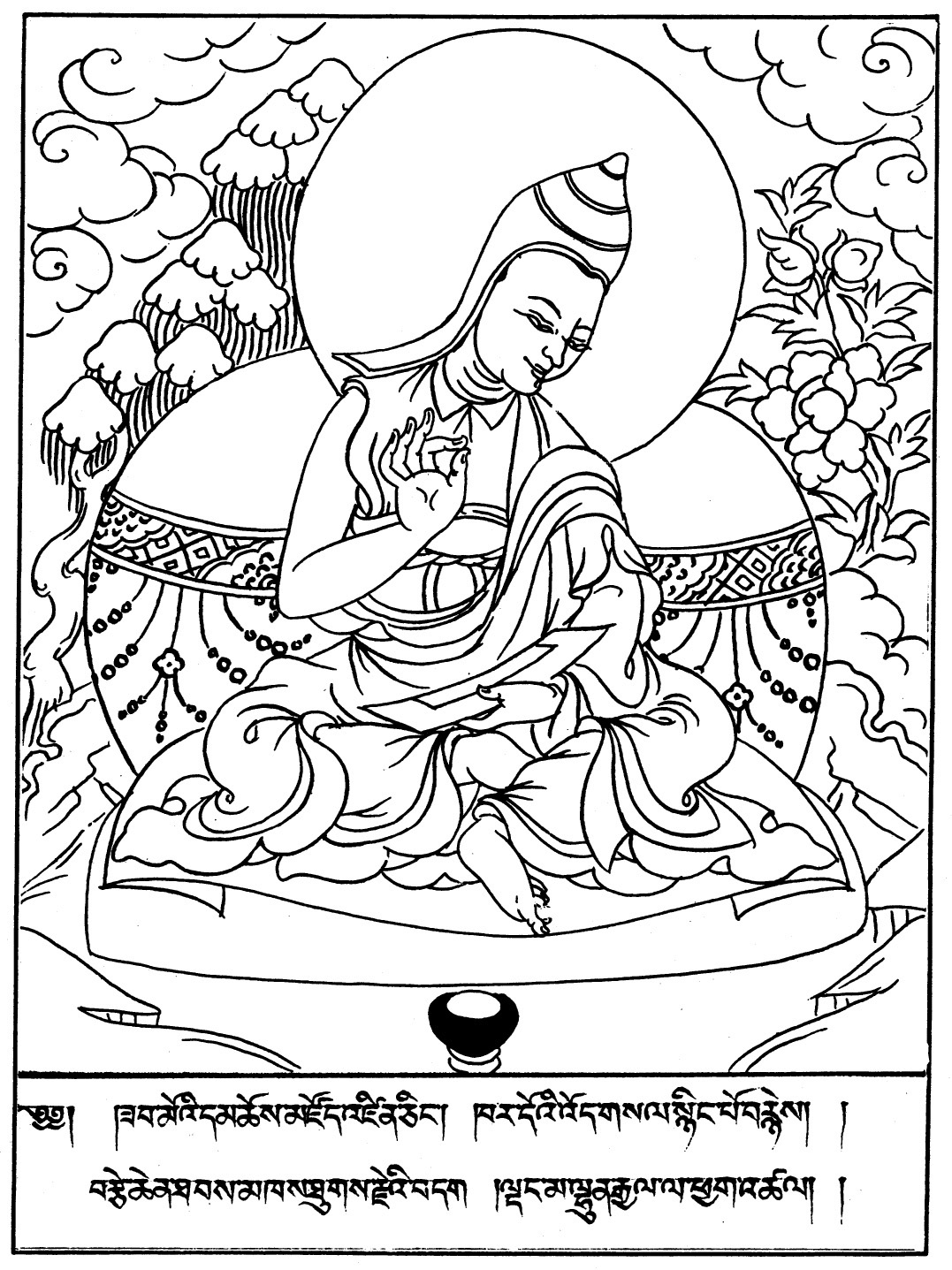 Après
avoir juste terminé une entrée wiki consacrée à Dangma Lhüngyel (lDang ma lhun
rgyal : http://www.wikidz.artremy.com/wiki/Dangma_Lhüngyel), par souci de
complétude bibliographique, j'ai lancé une recherche au sein du Historical
Dictionary of Tibet et suis tombé sur la notice suivante (p. 398) qui me semble
sérieusement défectueuse.
Après
avoir juste terminé une entrée wiki consacrée à Dangma Lhüngyel (lDang ma lhun
rgyal : http://www.wikidz.artremy.com/wiki/Dangma_Lhüngyel), par souci de
complétude bibliographique, j'ai lancé une recherche au sein du Historical
Dictionary of Tibet et suis tombé sur la notice suivante (p. 398) qui me semble
sérieusement défectueuse.
LDUNG
MA RNAM RGYAL (DÜNGMA NAMGYEL, b. ca. 1000). Amember
of the transmission lineage of rNying ma “innermost yoga” (shin turnal
’byor; Skt. atiyoga) teachings, particularly those of the Heart Essence ofVimalamitra
(Bi ma sNying thig), which according to tradition were taught bythe
Indian great perfection (rdzogs pa chen po) master Dri med bshes gnyen(Skt. Vimalamitra; fl. eighth
century). lDung ma rnam rgyal is regarded as thereincarnation
of Myang Ting nge ’dzin, who hid the 17 tantras of atiyoganear
the hermitage of bSam yas mChims phu. lDang ma rnam rgyal was theson
of dBu ru gzhol ma dge mchog and was a caretaker monk at Zhwa’i lhakhang
near Lha sa. He transmitted the sNying thig lore to his student lCebtsun Seng ge dbang phyug and to Kha rag sgom
chung.
1. Le nom de la personne concernée par cette
notice n'est pas lDung ma rNam rgyal mais lDang ma Lhun rgyal. Il n'est pas né
aux alentours de 1000 AD mais est très certainement mort en *937 AD selon le
comput établi par Zhang ston bKra shis rdo rje (1097–1167) dans la seconde
partie de son Lo rgyus chen mo. D'autres proposent 946 AD ou encore 949 AD.
2.
Les enseignements de l'Atiyoga ne forment pas un "innermost yoga"
mais plutôt un "yoga suprême" (ou supreme yoga en anglais), “ati”
(shin tu) ayant le sens de suprême, extrême, etc. Voir par exemple G. Huet,
Héritage du Sanskrit, p. 15 : ati pf. sur, au-delà — prép. très, trop — adv. en
excès, en grande proportion (...).
3. lDang ma Lhun rgyal n'est pas associé à la
transmission du Bi ma snying thig mais à celle des Dix-Sept Tantras (rGyud bcu
bdun) qui sont la source doctrinale du Bi ma snying thig.
4. L'expression “the 17 tantras of atiyoga”
suggère erronément qu'il n'y a que dix-sept tantras au sein de l'Atiyoga. C'est
une erreur grossière. Au sein des trois sections (sde gsum) de l'Atiyoga, la Section
des Préceptes (man ngag sde) comporte quatre cycles principaux de Tantras,
qualifiés d'extérieur, intérieur, secret, et secrétissime. Le cycle
secrétissime correspond au corpus des Dix-Sept Tantras, auxquels il convient
d'ajouter d'autres textes de la même catégorie, comme le Klong gsal, etc.
5. lDang ma n'a pas transmis "the sNying
thig lore" (dont l'essentiel fut découvert par lCe btsun Seng ge dbang
phyug) mais le corpus à la source de ces sNying thig.
 Chöying # 5 — Primordial Emptiness
and its Visionary Ornaments, by Jean-Luc Achard, translated from the French by
Marianne Ginalski, PDF ed., Khyung-mkhar, April 2018, 12 pages.
Chöying # 5 — Primordial Emptiness
and its Visionary Ornaments, by Jean-Luc Achard, translated from the French by
Marianne Ginalski, PDF ed., Khyung-mkhar, April 2018, 12 pages.
